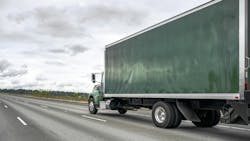At NACFE, we’ve talked a lot about the technology adoption S curve. But in case you’ve missed our musings, the idea behind the technology adoption curve is that the technology adoption rate for new technology is non-linear. It starts out slowly at first with what are called innovators and early adopters investing in technology. That is followed by two groups that are more discriminating purchasers in the early and later majority. Finally, we get to the laggards, the folks who are slow to purchase technology or who are unwilling to consider something new no matter how compelling it may be. For those of you who might want to study this more, it is commonly called the technology diffusion curve.
As the product matures, it becomes more available to others and consequently, more popular. Most often, this occurs as a result of early adopters sharing information about the new thing, causing the rest of the industry to think, “Maybe this is for me, too.” But even here, some people will justify not investing in the new thing and tell themselves they will become fast followers when they need to.
If we are going to see significant growth in the alternative fuel space, this group needs to start making investments in these technologies earlier. In fact, I suggest that being a fast follower in these more complex solutions is a myth, and you must get involved earlier.
See also: Roeth: Bringing clarity to the mess we're in
I think the innovators have done a great job of taking the risk with these new technologies—especially with battery electric vehicles as demonstrated in both Run on Less – Electric and Run on Less – Electric Depot. Not only are they investing in the technology, they are also willingly sharing what they are learning so that others have great information upon which to base their own technology adoption decisions.
It is important to remember with these new powertrains that duty cycle matters. Today there is no one direct replacement for a diesel engine in every application. But the innovator fleets have given us plenty of insights into where battery electric trucks are meeting performance expectations—in drayage, doing package delivery, and in regional haul. When deployed in applications like that, fleets are seeing good results.
I think it is time for fleets that are typically slower early and later majority to be more aggressive, even becoming “as fast as possible” followers to take the lessons learned from the innovators and run with them. Start talking to utilities about getting enough power to your site to add a charging infrastructure. Investigate the companies that are making BEVs—both the traditional manufacturers with BEV offerings and some of the newcomers that only have battery electric options.
And if BEVs don’t seem like the right option for you, look at some of the other alternative fuel options like renewable diesel, renewable natural gas, hydrogen fuel cells, etc.
The followers need to begin following and following quickly, or else we’ll need to come up with a new name for them.
About the Author

Michael Roeth
Executive Director
Michael Roeth is the executive director of the North American Council for Freight Efficiency. He serves on the second National Academy of Sciences Committee on Technologies and Approaches for Reducing the Fuel Consumption of Medium and Heavy-Duty Vehicles and has held various positions with Navistar and Behr/Cummins.
